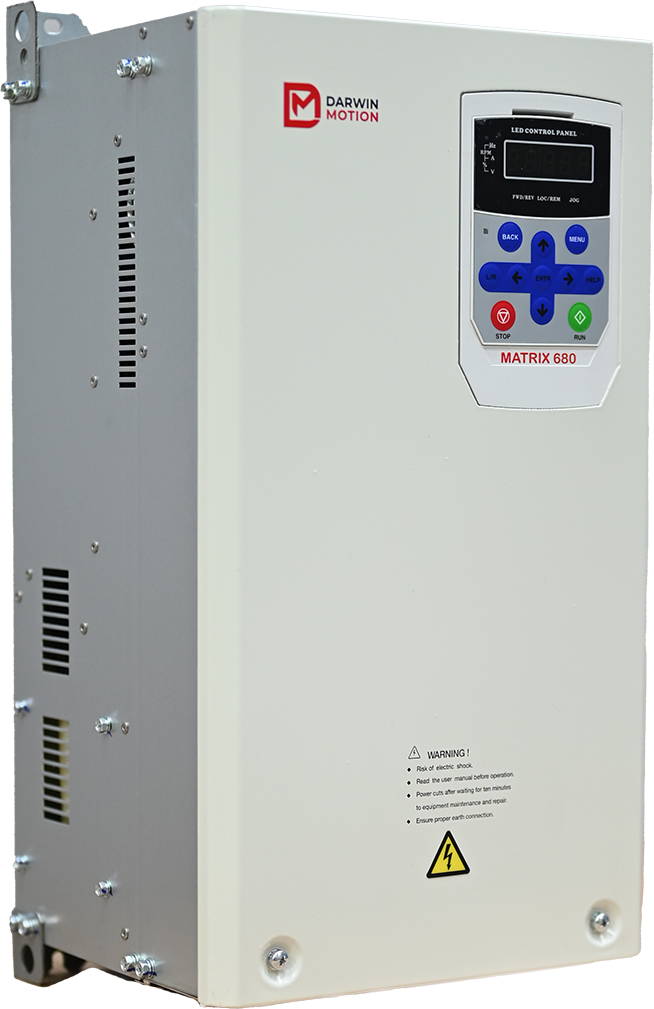Posted on 5th Dec 2024

In today’s industrial landscape, energy efficiency, operational flexibility, and cost reduction are crucial for maintaining competitiveness. One technology that significantly contributes to these goals is the Darwin Motion Variable Frequency Drive (VFD). When applied to compressors, a VFD can optimize energy usage, improve process control, and enhance equipment lifespan.
Compressors are essential in various industrial processes, supplying compressed air or gas for powering equipment, cooling, and other applications. Common types include:
Rotary screw compressors: Ideal for continuous operation and high-demand applications.
Centrifugal compressors: Used for high-capacity and high-speed applications.
Reciprocating compressors: Suitable for smaller, intermittent needs.
Compressors traditionally run at fixed speeds, often operating inefficiently at partial loads. This is where VFDs make a significant impact.
High Performance Drive is a device that controls the speed and torque of an electric motor by adjusting the frequency and voltage of the power supplied. By modulating motor speed, VFDs align the compressor’s output with the actual demand, reducing unnecessary energy consumption.
Compressors often operate below their maximum capacity. Without a VFD, they use more energy than necessary, leading to inefficiencies. A VFD adjusts motor speed to match the load, cutting energy use by 20-50% in some cases.
VFDs enable precise regulation of compressed air or gas output, ensuring consistent pressure levels. This is crucial for processes requiring stable operating conditions.
Starting and stopping compressors without a VFD can cause mechanical stress due to high inrush currents. VFDs provide smooth start and stop cycles, minimizing wear and tear.
With fewer mechanical stresses and optimized operation, VFD-equipped compressors experience less frequent breakdowns, leading to lower maintenance expenses.
Operating at variable speeds, VFDs can reduce the noise levels of compressors, which is beneficial for workplace safety and comfort.
Manufacturing Plants: Maintaining consistent pneumatic power for tools and machinery.
HVAC Systems: Regulating air conditioning and ventilation in industrial facilities.
Food and Beverage Industry: Ensuring hygienic processing and packaging.
Oil and Gas: Managing gas compression for pipelines and refining.
Pharmaceuticals: Supporting precision equipment with stable compressed air supply.
While VFDs offer numerous benefits, their integration must be carefully planned:
Harmonics and Electrical Noise: Mitigating disturbances that may affect other equipment.
Initial Costs: While VFDs require upfront investment, the long-term energy and maintenance savings typically justify the expense.
Environmental Conditions: Ensuring the VFD and compressor are protected from extreme temperatures, dust, and moisture.
The integration of Variable Frequency Drives with compressors in industrial applications is a game-changer for energy efficiency, reliability, and operational flexibility. By tailoring compressor performance to real-time demand, VFDs help industries achieve significant cost savings and enhanced process control, aligning with sustainability and productivity goals.
Investing in a VFD for compressors is a forward-thinking move that delivers tangible benefits in both the short and long term. As industries strive to optimize operations, VFDs will continue to play a pivotal role in achieving these objectives.